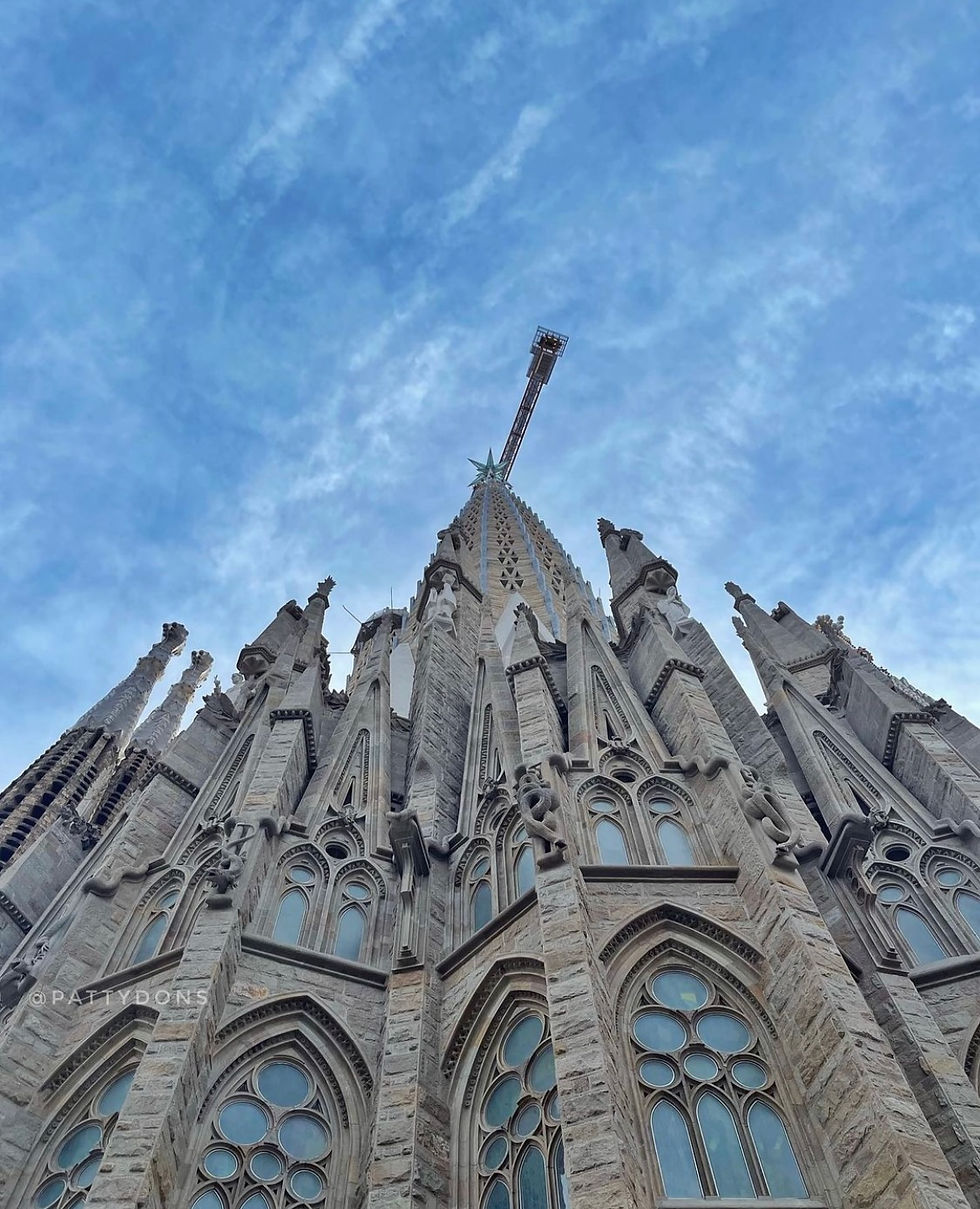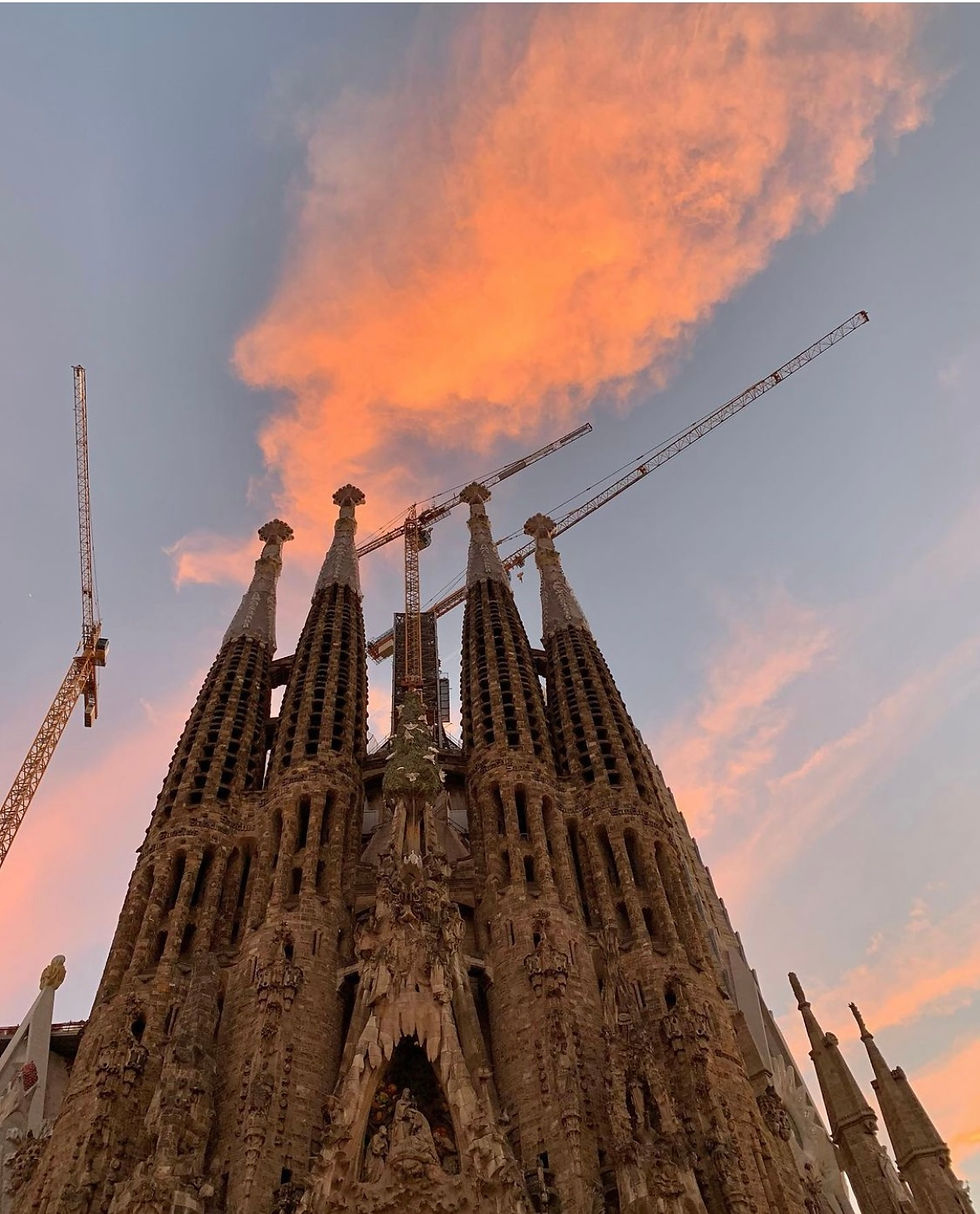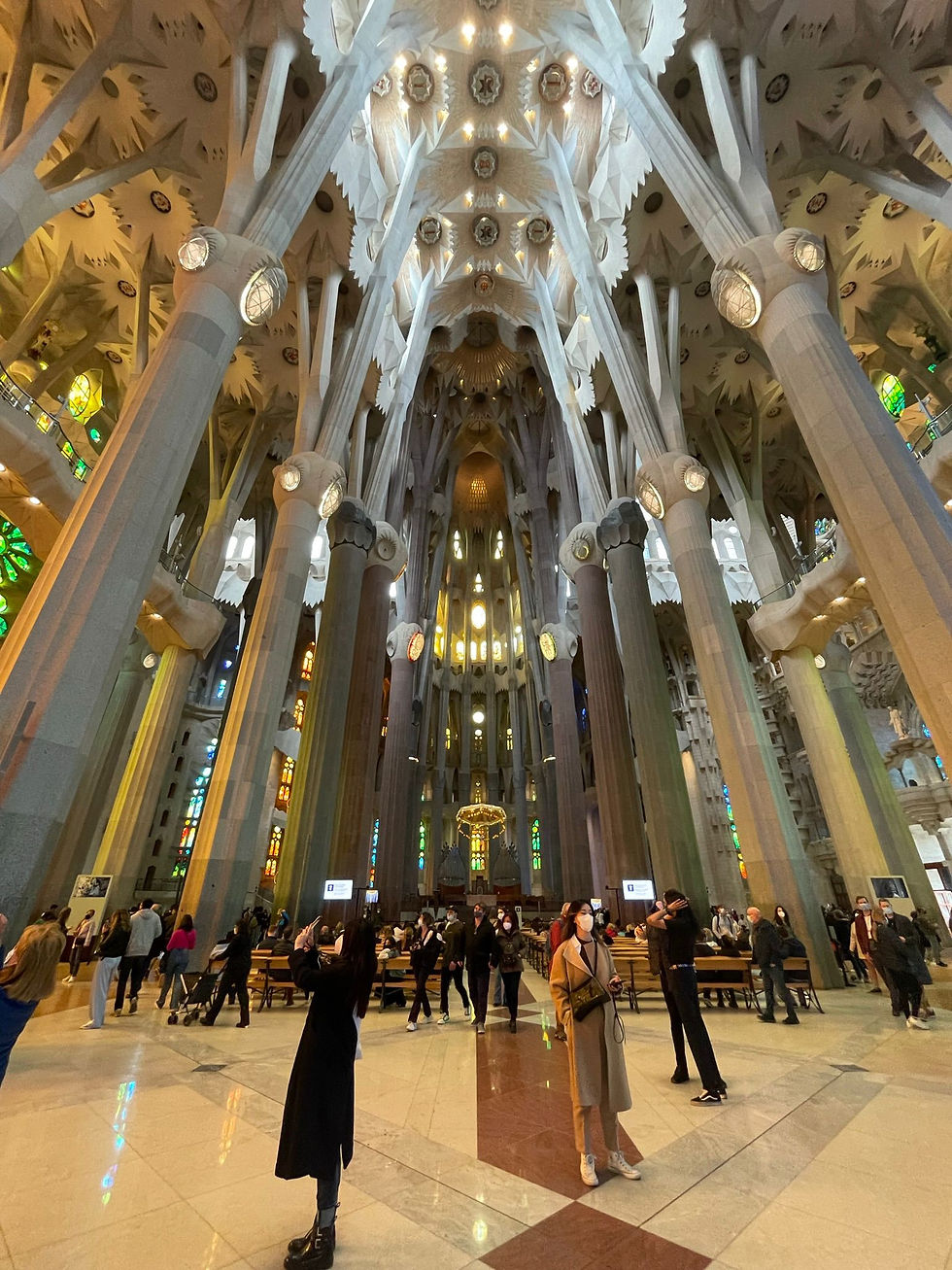Stop and Stare
- hbatista9
- May 24, 2022
- 4 min read
By Hannah Batista Barcelona is known for many things— delicious tapas, jaw-dropping art, but nothing compares to the famous architectural designs throughout the city. As a primarily Catholic city, the churches are nothing less than a work of art. People travel from all over the world to see the Basílica de la Sagrada Familia, also known as La Sagrada Familia. La Sagrada Familia remains the largest unfinished Roman Catholic church in the world.
The architecture of the basilica dates back to 1882. It was first designed by Francisco de Paula del Villa and quickly taken over by the Barcelona icon, Antoní Gaudi. The original design for the project included neo-Gothic elements including ogival windows, buttresses, flying buttresses, and a pointed bell tower. Gaudi took it over with intentions of making it the church of the future. In 1936, Gaudi’s workshop was partly destroyed during the Civil War. Luckily, some plans and photos from Gaudi’s workshop were still intact, which allowed for the continuation of the church as he planned. The basilica is still under construction today and is estimated to be completed by 2026.

Born and raised in Barcelona, Oscar has seen the basilica being built since as long as he can remember. He’s witnessed the slow but steady progress of the church inching toward completion.
“It’s been pretty cool to see something so famous and monumental grow over many years,” Oscar said. “I don’t appreciate it as much as I should since I see it all the time, but it really is beautiful.”
Located in the Eixample district of Barcelona, the basilica simply can not be missed. From anywhere in the district, you can look up, and you are most likely to see the tip of one of the towers of the Sagrada. The size of the structure is truly captivating; it’s not something you can walk right past and continue on with your day. The first time you see it, you will most likely stop in your tracks and stand there in awe for several minutes. One of the most amazing, and surprising, aspects of the church is the fact that the massive and world-renowned structure stands in the middle of the city– free and easily accessible for anyone to see. People walk past it to get to work or to grab a coffee as if it’s any regular old street in town.

From the outside of the church, your eyes will gravitate upwards at the four spires that are dedicated to 4 of the 12 apostles. They were all designed with a pointed shape topped with pinnacles. The pinnacles are brightly colored and each shaped to represent the bishops: the mitre, ring, cross, and staff.

Although the church is free to see from the outside, most of the magic of the church lies within it. In order to see the inside of La Sagrada Familia, you need to buy tickets in advance. They offer a basic ticket that guarantees entrance, a ticket that includes a guided tour, and tickets that include entrance to the church and one of the towers, with and without a guided tour. Seeing the inside is worth every penny and is an experience you will never be able to forget.
When you enter the church, you will immediately be overwhelmed (in the best way possible) by the size, height of the ceilings, colors, and lights throughout the structure. The interior of the church displays Gaudi’s gothic architectural style overflowing with religious symbolism and free-flowing, curving, colorful, and organic forms. The floor plan of the church is based on a five-aisled basilica where the middle ship is larger than the rest. The layout of the church resembles the shape of a huge Latin cross, another example of the church’s religious allusions. Each and every single aspect of the floor plan was created purposefully; every element is intentional and has its own symbolic meaning.

Studying abroad from the United States, Jenna was blown away when she stepped into the Sagrada for the first time. No amount of pictures on the internet could have prepared her for that moment.
“I was literally speechless,” Jenna said. “I have never seen a church, or really any structure, that beautiful or unique before… I was stunned.”
Gaudi’s Neo Gothic and Art Nouveau styles of architecture can be seen and felt throughout the entire church. The naves of the church are based on traditional Gothic architecture, except without the added buttresses and walls.
As you look up, you’ll see the apse of the church. The apse is located in the area of the altar and was created in traditional Gothic style architecture. The apse is supported by thick pillars and has a spiral staircase on either side. A dome was later added to the apse that is filled with light and dedicated to the Virgin Mary.
A look into the mind-blowing elements of Gaudi's iconic architectural style.
Another iconic part of the architectural design is the basilica’s facades. There are three facades: the nativity facade, the passion facade, and the glory facade. These facades are the only part of the church that were completely designed by Gaudi before he passed away. The first facade represents the birth of Jesus Christ and aims to symbolize birth and life. The second facade represents the passion, life, and death of Jesus Christ by showing scenes that depict Jesus’ last night before crucifixion, the death, and finally, his resurrection. The third facade aims to represent Jesus’ eternal glory and bliss.

On vacation with her husband and daughter, Miriam made sure to check the Sagrada Familia off her bucket list before leaving Barcelona. Seeing the church was her daughter’s only request.
“My daughter has been talking about seeing this church for months,” Miriam said. “It exceeded all of our expectations, and I am so happy I got the chance to bring my daughter here.”
An architectural masterpiece, La Sagrada Familia is a must see on your trip to Barcelona. As a city that takes pride in its history, culture, and architecture, it is safe to say that the Sagrada Familia stands at the heart of those values.











Comments